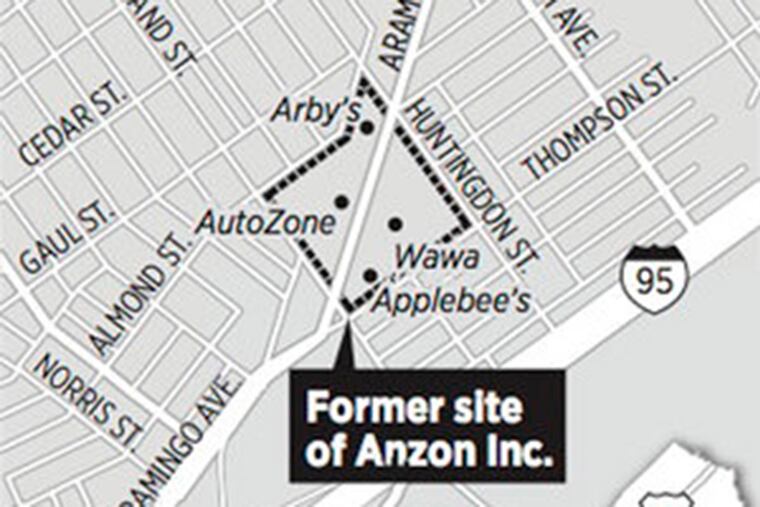Lead study renews concerns for Port Richmond site
A recent government study that found elevated blood levels of toxic lead in children living near a former lead factory in Port Richmond is renewing concerns about environmental contamination and how to address it.

A recent government study that found elevated blood levels of toxic lead in children living near a former lead factory in Port Richmond is renewing concerns about environmental contamination and how to address it.
The study, led by the U.S. Centers for Disease Control and Prevention and funded by the U.S. Environmental Protection Agency, collected soil, tap water, indoor dust, and child blood samples from homes around the former Anzon Inc. plant on Aramingo Avenue. Participants were recruited from the surrounding neighborhoods - Port Richmond, Kensington, and Northern Liberties - during two weeks in July 2014.
Of 126 children tested, from 11 percent to 13 percent had elevated blood lead levels, according to a study summary on the CDC website. Nationally, 2.5 percent of children have elevated levels.
But putting that higher rate in context is tricky. Children in old industrial cities - where most houses were built before lead paint was banned - tend to have higher blood lead levels than those in less urban areas. Poverty is also a factor, with paint chips from crumbling buildings a prime source of lead for crawling children.
About 13 percent of children throughout Philadelphia had elevated blood lead levels last year, according to the city's Department of Public Health, which gets blood test results from physicians.
The CDC study found 51 of 72 soil samples around the site, or 71 percent, had elevated lead levels. It also found elevated lead in 26 percent of front door dust, 21 percent of floor dust, and 13 percent of window dust. Water samples were not above the EPA action level.
However, the study summary does not say whether high soil lead levels near homes were clearly linked to high blood lead levels of children in those homes.
Asked whether a link was found, an EPA spokeswoman emailed: "EPA does not have information at this time that the 11-13 percent of children in the study group are unusual compared to similar neighborhoods in Philadelphia. The implication of this information is simply that blood lead survey data, like most survey data, can be unreliable."
Caroline Johnson, director of disease control for the Philadelphia Health Department, said that when CDC officials briefed the city in April, they did not see a pattern connecting high soil lead to high blood levels.
"The original analysis showed no association," Johnson said. "Through intermediaries, I'm hearing that the CDC is doing another, more detailed, analysis of the results to see if there is an association."
Johnson added that most cases of child lead poisoning in Philadelphia "are related to inside the house" - lead from old paint or pipes.
Lead is considered so harmful to children that even small amounts can cause serious health problems; no safe level in the blood has been identified. Children under 6 are especially vulnerable to lead poisoning, which has no obvious symptoms but can severely affect mental and physical development.
The Anzon plant in Port Richmond closed in 1996. But lead-based paint and smelting operations on the site go back to 1849, much of them under the name John T. Lewis Co. Since the 1970s, the area has been the focus of government investigations of hazards, pollution control crackdowns, and a class-action lawsuit.
The latest study was prompted in part by an investigative series, published three years ago by USA Today, that looked at the dangers of long-gone lead factories nationwide.
Representatives from the CDC and EPA held a meeting at a church in Kensington on Sept. 11 to share the study results with the community, but only three people showed up.
Sandy Salzman, executive director of the New Kensington Community Development Corp., said she was shocked to find out a meeting had been held.
"We pushed the EPA for testing," she said. "I've been meeting with my staff about the next steps, how we're going to deal with this. Something has to be done."
Clare Dych, president of the East Kensington Neighborhood Association, said it had received no notification of the meeting.
"It's concerning whenever you hear a negative health indicator is higher in your neighborhood," she said. "I'm not one to panic. I just think it's best to get the information out there."
Both the CDC and EPA said they were continuing to study and monitor the area.
"We are still discussing options for a way forward," the EPA spokesman emailed.
215-854-2720
@repopter